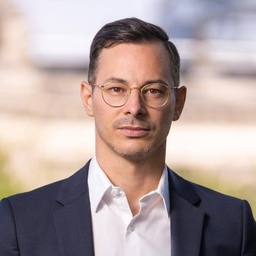
Stefan Nicola
Autos Editor and Reporter at Bloomberg News
Automotive editor for @business in Berlin, #Hyperdrive columnist. All things European #carindustry, German economy, #Tesla. Opinions my own. https://t.co/62kdVgk7cm
Articles
-
1 week ago |
news.bloomberglaw.com | Stefan Nicola |Albertina Torsoli
Renault SA is under pressure to quickly find a replacement for Chief Executive Officer Luca de Meo after the shock news of his planned departure, as the industry grapples with rising trade tensions and intense competition from Chinese manufacturers led by BYD Co.The board led by Chairman Jean-Dominique Senard is looking at internal and external CEO candidates including Dacia boss Denis Le Vot and Stellantis NV purchasing chief Maxime Picat, according to people familiar with the matter.
-
1 week ago |
bloomberg.com | Stefan Nicola |Albertina Torsoli
Luca de Meo (Bloomberg) -- Renault SA is under pressure to quickly find a replacement for Chief Executive Officer Luca de Meo after the shock news of his planned departure, as the industry grapples with rising trade tensions and intense competition from Chinese manufacturers led by BYD Co. The board led by Chairman Jean-Dominique Senard is looking at internal and external CEO candidates including Dacia boss Denis Le Vot and Stellantis NV purchasing chief Maxime Picat, according to people...
-
2 weeks ago |
afr.com | Stefan Nicola
Skip to navigationSkip to contentSkip to footerHelp using this website - Accessibility statementTwo decades ago, the US military kicked off the race to build self-driving cars by sending a fleet of fledgling robot vehicles across the Mojave Desert in its Darpa challenge. By 2015, autonomous vehicle technology was being widely pursued, and the industry was abuzz with predictions that driverless cars would soon be everywhere. It didn’t happen.
-
3 weeks ago |
news.bloomberglaw.com | Stefan Nicola
Two decades ago, the US military kicked off the race to build self-driving cars by sending a fleet of fledgling robot vehicles across the Mojave Desert in its seminal Darpa challenge. By 2015, autonomous vehicle technology was being widely pursued, and the industry was abuzz with predictions that driverless cars would soon be everywhere. It didn’t happen. Some legacy carmakers and startups abandoned their efforts, citing excessive costs and complexity.
-
3 weeks ago |
bloomberg.com | Stefan Nicola
A Tesla Cybercab prototype. (Bloomberg) -- Two decades ago, the US military kicked off the race to build self-driving cars by sending a fleet of fledgling robot vehicles across the Mojave Desert in its seminal Darpa challenge. By 2015, autonomous vehicle technology was being widely pursued, and the industry was abuzz with predictions that driverless cars would soon be everywhere. It didn’t happen. Some legacy carmakers and startups abandoned their efforts, citing excessive costs and complexity.
Try JournoFinder For Free
Search and contact over 1M+ journalist profiles, browse 100M+ articles, and unlock powerful PR tools.
Start Your 7-Day Free Trial →X (formerly Twitter)
- Followers
- 1K
- Tweets
- 4K
- DMs Open
- Yes